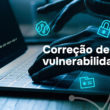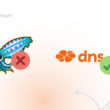That the password is important everyone knows. But it seems that using a strong and safe password is not of general knowledge, unfortunately. According to a survey , in 2020 the most widely used password on the internet was “123456”. Alarming. In tenth place was “password”, which I believe to be very deductible (irony).
The overwhelming majority of passwords can be broken in less than a second in simple hacking attacks. This proves that building safe passwords is not part of most internet users.
Thinking about this scenario, this text you will see some ways to make a strong and safe password, you will understand the dangers of weak passwords and some ways to prevent password leakage.
Spoiler: At the end of the article we provide for download the guide for creation and management of secure accounts and passwords .
What makes a safe password?
The strength of a password depends on the combination and types of characters used, its size, complexity and unpredictability.
Therefore, a good password should be long, with at least 8 characters, have combinations of numbers, uppercase, tiny and symbols.
This makes it harder to find the password, or succeed in trying to break the password using a brute force attack, for example.
In the next lines you will see some simple tips for creating strong and safe passwords.
How to create strong and secure passwords
As we mentioned earlier, some actions at the time of password creation make it stronger and safer. To make it clearer, we have separated 5 very important tips:
- Create long passwords, with 8 characters or more. A 14 -character password can be considered very safe.
- Use alphanumeric characters, uppercase and lowercase letters, numbers and symbols. The greater the variety of characters in your password, the better.
- Do not use real words of any language, avoid written words backwards, with abbreviations or common orthographic errors.
- Use characters from the entire keyboard, not just the most commonly used letters and characters. Also avoid sequences of characters such as “12345678” or “QWERTYU”.
- Do not have passwords with your name or acquaintances, important dates, number of documents and similar information.
Following these tips, your password will surely be safer. But there is no point in a strong password if you use the password, your behavior is not safe.
There are several forms and places where a password can be leaked. Therefore, we list good practices in using passwords so you can take care of your behaviors. that you can check below:
- Avoid reuse passwords in different user accounts or different systems. The ideal is to create password groups, according to the risk involved in each account.
- Avoid using the same password for personal and professional accounts and always use unique passwords on more sensitive accounts such as email or internet banking.
- Change your passwords frequently, preferably every 90 days.
- Avoid sending passwords by email, SMS, messages on WhatsApp or any other way.
- Do not store or write down passwords in unprotected or easily accessible places.
- Use memorization techniques or some password management method or service.
- Never enter a password for friends, known and especially for strangers.
If you follow these simple tips, you will have more security when using your passwords on a daily basis. Also, as cited in item 5, you can use a password storage service to assist in management if you have many passwords. In the next lines, we will see 4 of the main services of this type.
Password storage
Passwords are recommended to be stored in some account and password manager, which allow you to store a large amount of accounts in the same place. For those who use many passwords, or are responsible for a team's password management in the company, for example, such tools are key.
Among the most common are:
Choose the solution that best suits your needs so you have more control over users and passwords.
When to change your passwords?
Changing your passwords periodically is very important.
However, in some situations, passwords should be changed immediately:
- If the computer or equipment with the stored password has been lost or stolen.
- By purchasing equipment that has some standard access password and can be accessed by network, such as routers, cameras, servers, etc.
- If any software, website or system you use has security problems or data leakage.
Try to change your passwords periodically, preferably every 90 days, so the chances of leak access will be lower.
The dangers on the internet
Passwords are used to authenticate user accounts in order to ensure that the user is accessing is really the owner or responsible for the account. It is one of the main ways of validating users used on the internet, especially for simplicity in password access and control procedures.
However, a strong password is not enough to protect access to your personal data. There are some techniques, which if there is no careful care of the user, you may lose confidential data for hackers on the internet. See below some of the most common:
- Keyloggers: Malicious software that records all characters typed on the device
- Phishing : attempt to capture your data using fake sites
- Brute force attacks: multiple attempts to discover the password using specific software
- Data interception in navigation without encryption
- Social Engineering blows: persuasion methods for confidential information
To contextualize, according to a survey between Mastercad and Instituto Datafolha, 57% of Brazilian companies are frequent targets of digital attacks and fraud, involving attacks such as those listed above. In addition, general public knowledge about cybership is still low, according to data from another research .
Therefore, knowing the strategies and actions of digital criminals is as important as creating safe passwords and keeping them updated periodically.
Guide for Creation and Management of Accounts and Safe Passwords
To help with this process of knowledge about the dangers of the internet using passwords, we create the guide for creation and management of secure accounts and passwords . In the ebook available for free download, you will find:
- User accounts
- Authentication forms
- What makes a safe password?
- Creating strong and secure passwords!
- Good practices in the use of passwords
- Password storage tools
- Password change
- How can passwords be discovered and what to do to avoid?
- Password leakage cases
- How to prevent?
- Keyloggers
- Phishing attack
- Brute force attacks
- Data Interception
- Social Engineering blows
- Free materials on internet security
The material contains more in -depth content on the theme of this text and also brings good solutions to password safety problems.
Finally, I hope that the content of this article in conjunction with the material can help you create a strong password and keep your data and information safer.
Until later!











